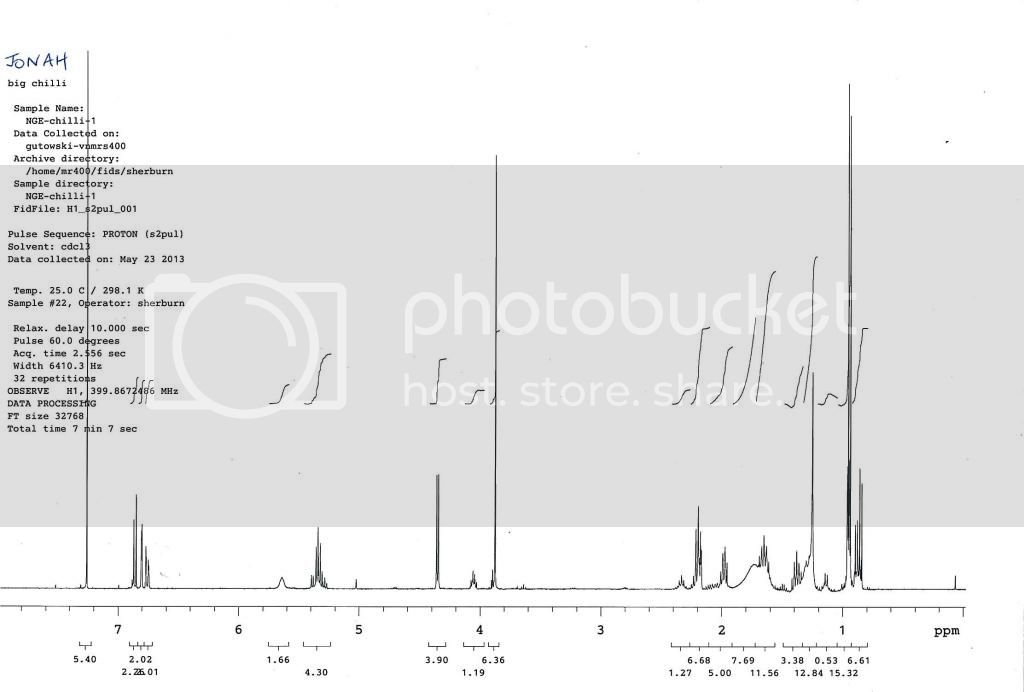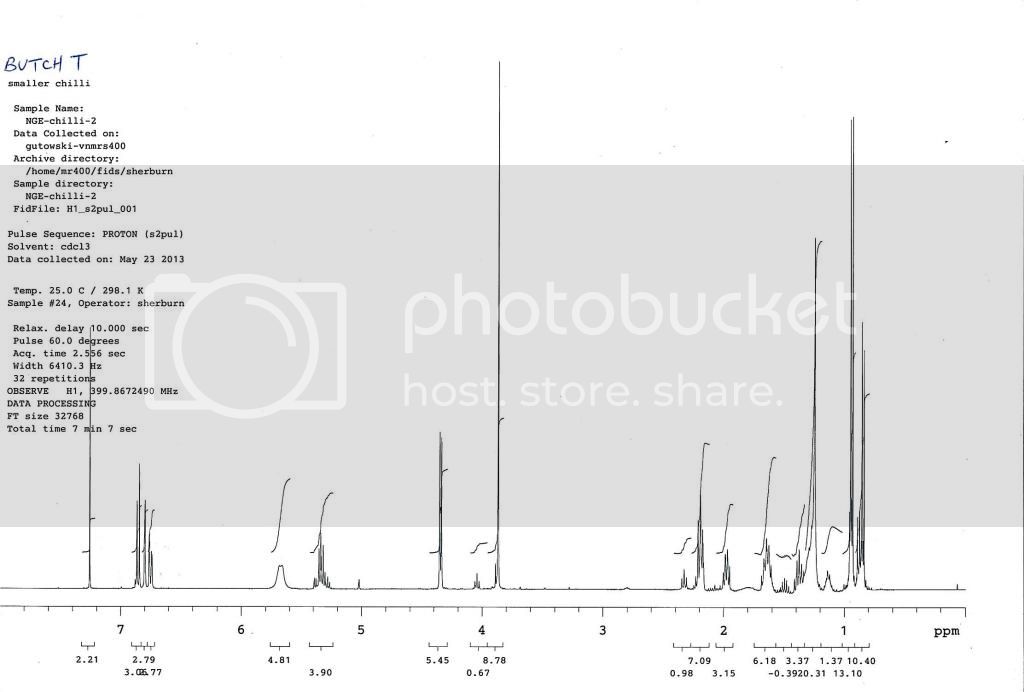We just did an analysis of the capsaicin content of a fresh Jonah pod (seeds from Semillas) and a fresh TS Butch T pod (seeds from Hippy Seed Co) from plants grown side-by-side. Here are some initial observations:
I guess that very few forum members would be interested in analysing the NMR spectra but I'm happy to post them if anyone would like to see them.
The lack of dihydrocapsaicin in the Jonah pod is interesting. Habaneros generally have a 60:40 ratio of capsaicin:dihydrocapsaicin, which is mentioned here: http://pubs.acs.org/doi/pdf/10.1021/ed1006025
I don't know if the capsaicin:dihydrocapsaicin ratio would be different in pods from the same plant grown at the same time. People have talked about variation in heat from pod to pod from the same plant, so we'll have to look at some more pods to see if this is a general trend.
Does anyone have suggestions for other tests?
- the Butch T pod has a slightly higher total capsaicin content than the Jonah;
- the Butch T pod has a roughly 2:1 ratio of capsaicin to dihydrocapsaicin, whereas the Jonah contains mainly capsaicin and only a small amount of dihydrocapsaicin;
- both contain small amounts of other analogues, which we have not identified.
I guess that very few forum members would be interested in analysing the NMR spectra but I'm happy to post them if anyone would like to see them.
The lack of dihydrocapsaicin in the Jonah pod is interesting. Habaneros generally have a 60:40 ratio of capsaicin:dihydrocapsaicin, which is mentioned here: http://pubs.acs.org/doi/pdf/10.1021/ed1006025
I don't know if the capsaicin:dihydrocapsaicin ratio would be different in pods from the same plant grown at the same time. People have talked about variation in heat from pod to pod from the same plant, so we'll have to look at some more pods to see if this is a general trend.
Does anyone have suggestions for other tests?


